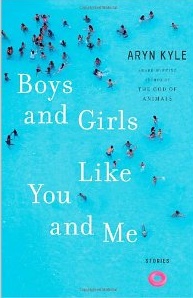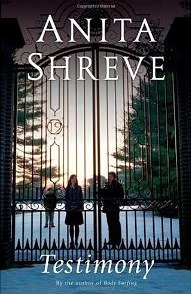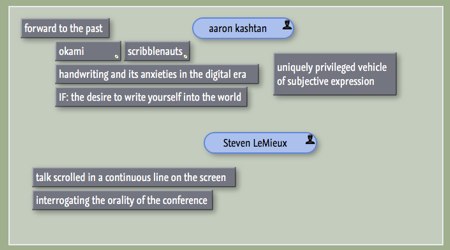It seems to me that, 40 years ago, we’d all be clustered around the television listening to Walter Cronkite explaining every intricacy and detail of the efforts to stop the leak. Want to know what that bendy thing in the live video is? Walter would find out and tell you.
Or maybe it would be David Brinkley, with Frank McGee on location. They’d have models and mockups and they’d be showing us live feeds from Mission Control and they’d analyze everything we could see in the video.
Just five years ago, we had Katrina and no one knew what was happening, but I could point you to five blogs that were piecing together the picture, blogs that knew as much about what was going on as anyone, anywhere – including people on the scene.
For some reason, even the scattering of science blogs covering the Big Leak are, let’s face it, lousy. They’re filled with acronyms and jargon, or they just generalize and speculate, or their horizons are limited to the writer’s specialty. They all seem to be wasting enormous amounts of time with commenters who have a Bright Idea (pump mercury into the pipe/nuke the well/fill it with metal kristals) or want to tout a conspiracy theory. Comments kill blogs; just turn them off.
Here’s an example from the best of the best — “Heading Out” at The Oll Drum. He’s an expert. He’s explaining why the top kill failed. Here goes:
Now, unfortunately that diagram left a significant part out, and that is that there are three sets of pipes leading down into the well. These are the well outer casing, which, surrounded by a layer of cement, holds the BOP in place. Then there is the production casing, which had just been set to the full depth of the well. And then there is the drill pipe that, at the time of the incident, extended down 8,367 ft from the platform, or roughly 3,367 ft below the BOP. That drill pipe (DP) had previously been used to locate the production casing at the bottom of the well, and itself now rode inside that production casing. In most normal operations it is closed at the bottom by a drill bit, but (and I’ll come back to this later), it had just finished the cementing of the production casing into position, and once it detached from that and was being pulled from the well, it was an open pipe all the way up to the rig floor. And in that condition, it could be used for other things. By pulling mud out of the DP and transferring it to the mud pits (or standoff vessel), the level in the riser would fall and be replaced by seawater flowing in at the top. Unfortunately this also lowered the weight of mud in the well, and that is what caused the oil and gas to flow into the well.
I can’t follow this. Some of it’s muddled, like that first sentence which seems to explain that the diagram he used in a previous post was wrong. (How come? Where was it wrong?) Some of it’s just awkward writing: why is DP preferable to “drill pipe”? At the heart or the matter, the writer is trying to establish some sort of causal chain, but after a dozen close readings I can’t quite figure out what the forces involved are. HO is doing terrific work — this is the best I’ve seen.
This is just not good enough.
I know nothing about oil drilling, but I have a Ph.D. in a physical science (from Harvard, forsooth) and I work in a technical profession and I have no idea what Heading Out is saying. And, damn it, this shouldn’t be that hard: we’ve got some pipes, some valves, a few fluids, and a reservoir under pressure. This is not rocket science, and it’s not quantum mechanics. Draw a diagram, show the flows, identify the forces.
By the way, is there a Mission Control? Where is it? Who is in charge? If something goes sour right now, who decides what button to push? Don’t you think that would interest people? More than today’s Globe front page, which featured a story about a kid who lied on his Harvard application and two stories about Cape Cod summer houses? The Big Leak was on page A8, which explained that the information in yesterday’s stories was wrong (again) and BP was confident that this time everything would probably be under control soon, much as they said yesterday. (Remember when lying to major newspapers had consequences?)
Where the hell is our press – amateur or professional? Where did the blogosphere go?
Who told the bloggers they could go home? Yes, it’s a technical story with numbers and everything, and it’s inconvenient to cover and there are no cool pictures of naked ladies or stolen Apple products.
C’mon folks: we’re better than this. Do the work.






